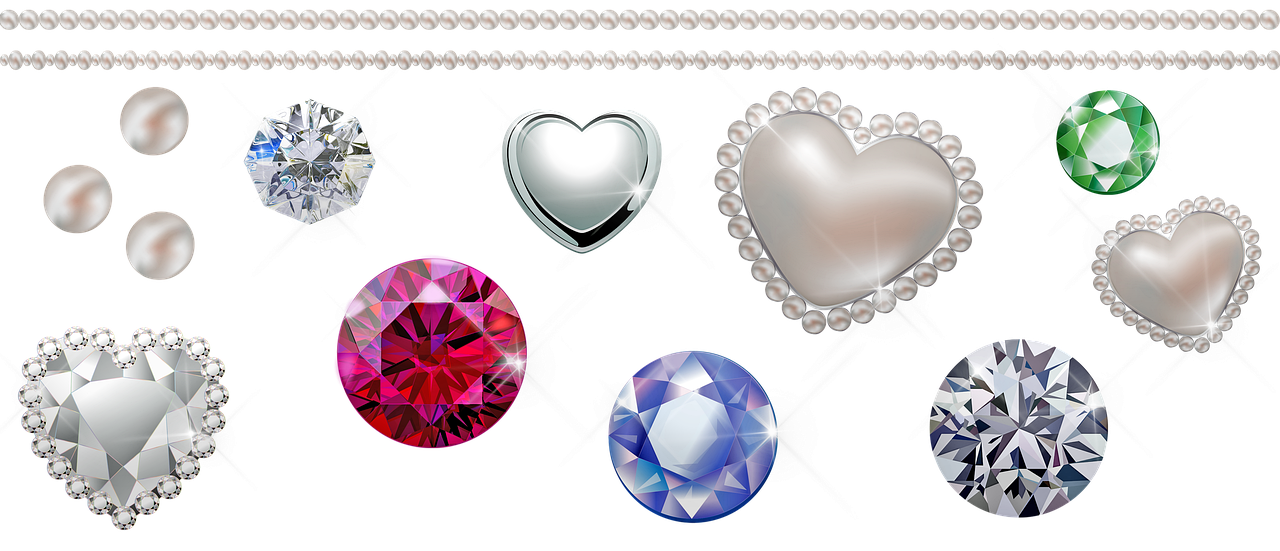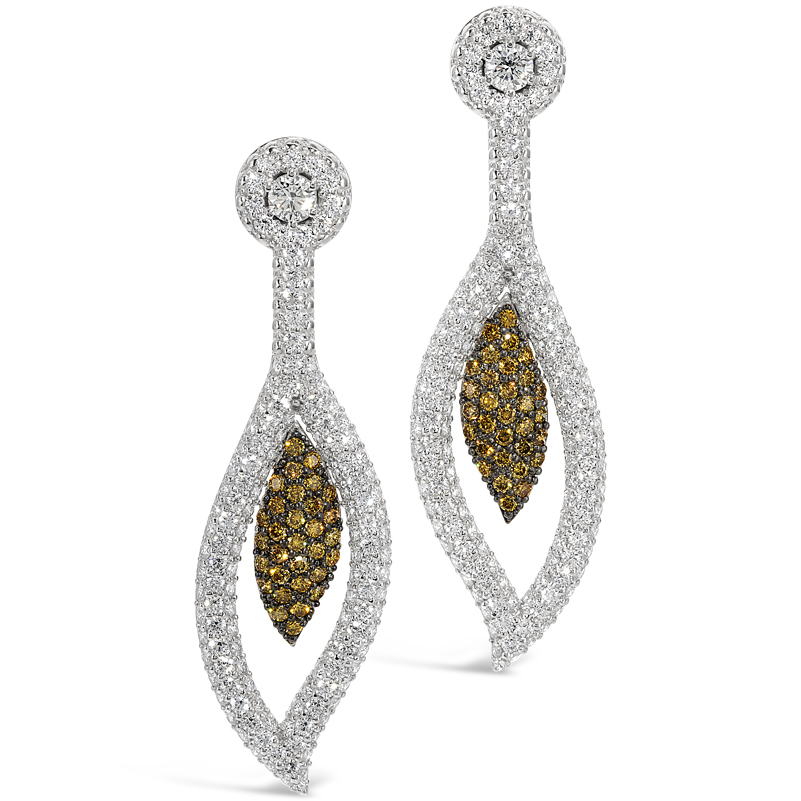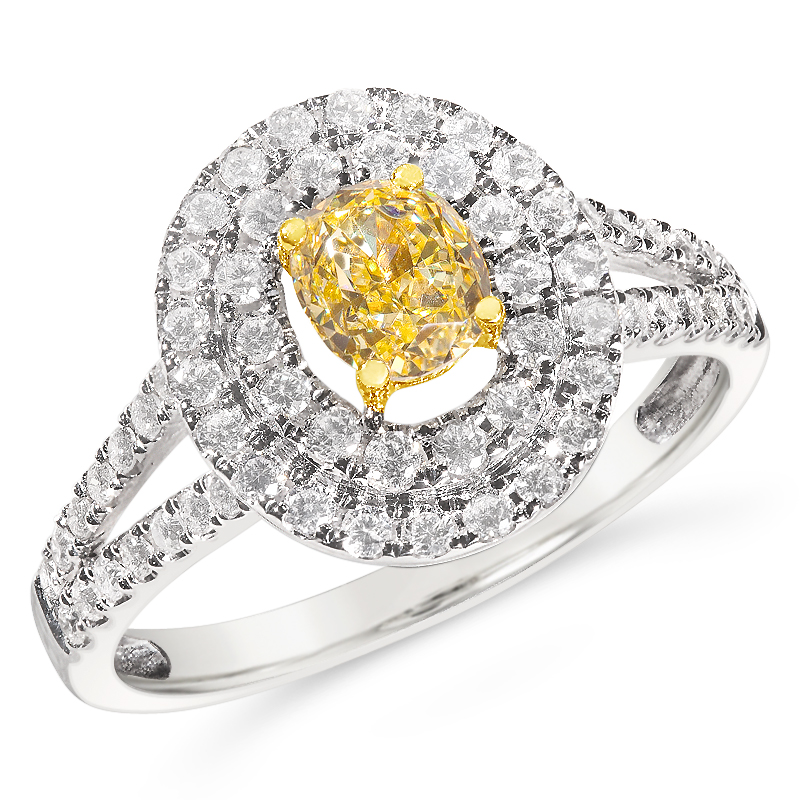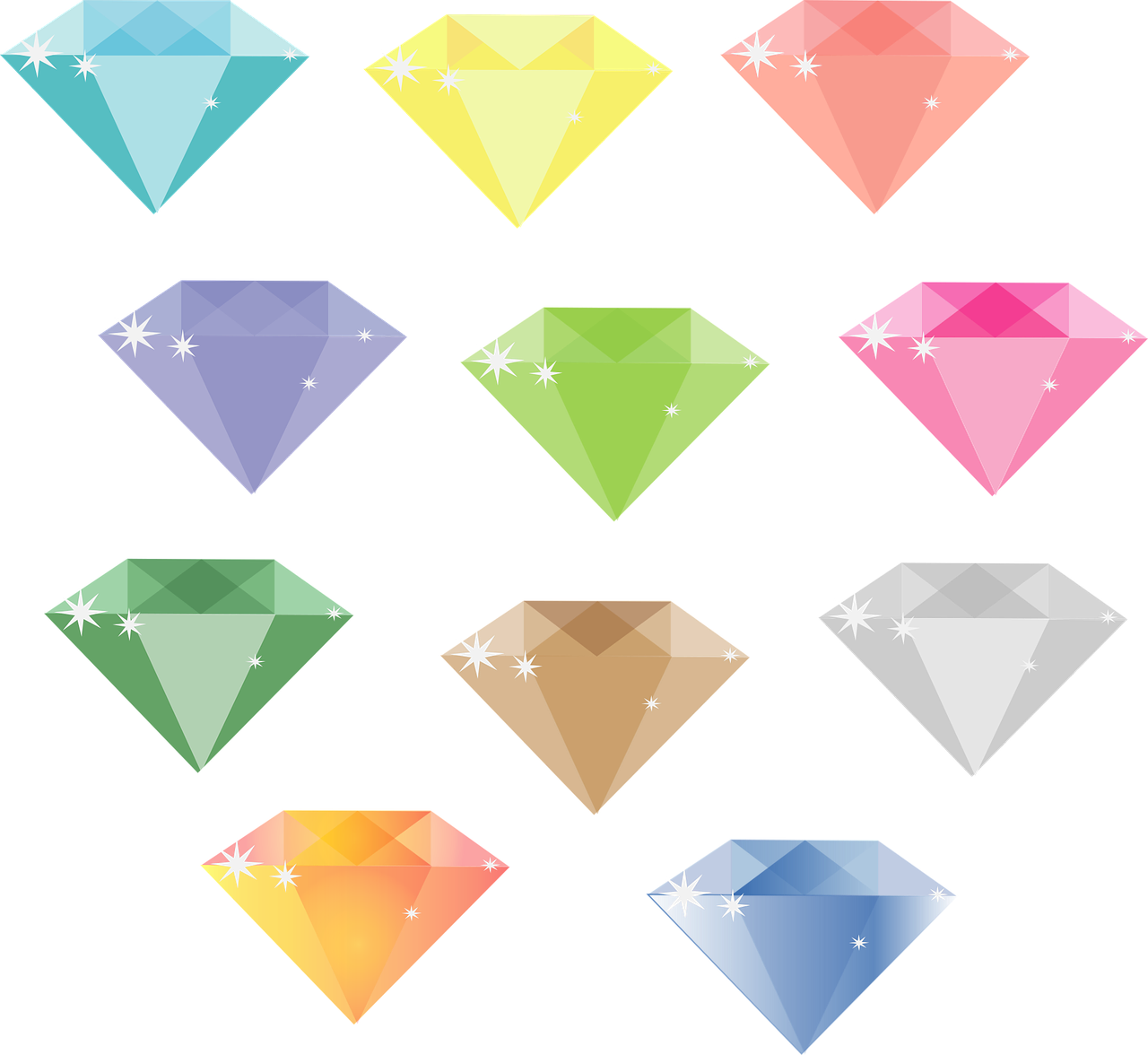
When discussing diamonds, most people think of them as clear as ice. The truth is a very small percentage of all polished diamonds receive a colorless grade, with the rest possessing small amounts of color, primarily browns and yellows. At the other end of the scale, about 1 in every 10,000 carats of polished diamonds possess enough natural color to be defined as Fancy Colored diamonds. Fancy Colored diamonds are mostly brown or yellow, but also form in virtually every color under the rainbow. At 100 East Fine Jewelry, we specialize in colored gemstone fine jewelry, which makes colored diamonds perfect for use in our diamond and gold jewelry. Click the link to browse the current 100 East Fine Jewelry Diamond Collection, some of which are fancy colored diamonds. Here’s a sample of recent scintillating fancy diamond pieces:


Brief History of Colored Diamonds
Around the 6th century, India began associating class structure with diamond color. Certain class levels were permitted to own diamonds of specified colors, using them as a badge of rank. Priests and rulers were allowed to wear colorless and white diamonds, landowners and warriors could wear brown diamonds, the merchant class was allowed to wear yellow diamond and the working classes could wear black or grey. A king could wear any color diamond he wished.
Fancy Colored diamonds lingered as a minor factor in the diamond industry until the 1980’s. At that time, their popularity and availability grew with the opening of an Australian diamond mine. The mine produced large supplies of brown shaded diamonds, which the buying public had little interest in. That is, until the mine’s marketers struck upon a marketing campaign which labeled those brown-shaded diamonds with romantic sounding names, such as Champagne and Cognac diamonds. This clever marketing effort, combined with more affordable pricing, spurred interest not only in brown diamonds, but in colored diamonds in general.
What Causes Natural Color in Diamonds?
Diamond is made up of a single element, carbon. So, why do diamonds form in a variety of colors? Color creation is influenced by the following conditions:
- The presence of impurities known as trace elements. Atoms other than carbon that aren’t part of the diamond’s essential chemistry find their way into the crystal’s structure. A diamond is typically about 99.95 percent carbon. The other 0.05 percent can include one or more trace elements. Nitrogen is the most common trace element found in diamond, often resulting in yellow diamonds.
- Crystal structure defects created during formation can result in a smoky or brownish colored diamond.
- A combination of the above two. In this case a structural defect creates space for the trace element, usually nitrogen (creating yellow diamonds) or boron (creating blue diamonds).

Do GIA’s 4C’s of Diamond Grading Apply to Colored Diamonds?
GIA developed their 4C’s scale (clarity, color, cut and carat weight) of diamond grading for Normal Color Range diamonds, those identified as colorless to possessing slight amounts of yellow or brown color. On the Normal Color Range scale, absence of color enhances a diamond’s value. GIA has published guidance on evaluating the quality of Fancy Colored diamonds based on the 4C’s concepts. However, each “C” may be defined differently and/or take on a different relative importance when evaluating a Fancy Colored diamond.
- Color – Normal Color Range diamonds are graded on the absence of color. Fancy Colored diamonds are valued almost exclusively for their intensity, deepness and richness of color. The more intense the color, the more rare and valuable the diamond.
- Carat Weight - After color intensity, carat weight has the most impact on price for Fancy Colored diamonds. Just like colorless and near colorless diamonds, large colored diamonds are quite rare, making them much more expensive.
- Clarity - Because face-up color of the diamond is the most important factor, clarity doesn’t carry the same importance in determining a diamond’s value as it does for Normal Color Range diamonds.
- Cut - Just as it is with Normal Color Range diamonds, cut is quite important for Fancy Colored diamonds. The emphasis, though, is on creating the most desirable color rather than focusing on dimensional proportions designed to enhance the scintillation of Normal Color Range diamonds.
Which Colors are Most Rare and Valuable?
As mentioned earlier, many diamonds in the Normal Color Range possess hints of yellow or brown. It should be no surprise, then, that diamonds can also naturally possess sufficient yellow or brown color that it’s quite apparent and can be classified as Fancy Colored. Brown is the most common Fancy Colored diamond, followed by yellow. These two colors are generally less valuable than the other Fancy colors. Researching prices for fancy brown or yellow diamonds is not difficult, since the overall supply is good except in very large sizes. Other colors can be more challenging.
Blacks, greys and fancy whites are also considered Fancy Colored diamonds. Naturally colored black diamonds (they’re actually overly dark green) are created by inclusions. However, they make up a very small portion of the market. Most black diamonds are treated by either heat or irradiation to create the black color. Fancy white diamonds are also colored by inclusions, which give them a milky white opalescent appearance that is quite different from Normal Colored Range diamonds.
The remaining colors are quite rare. Accordingly, even a slight amount of color places them in the Fancy Colored category. Red, green, purple, and orange are generally the most difficult to find, followed by pink and blue.
Miscellaneous Information
India, South Africa, and Australia are the most well-known historical and current sources of Fancy Color diamonds. Brazil, Venezuela, Guyana, and Indonesia are also producers of Fancy Color diamonds.
In November, 2020, a major diamond mine in Australia closed after 37 years of operation. In that time, the mine’s output totaled 865 million carats of diamond crystals. It was regarded as a consistent producer of colored diamonds, including chocolate browns, cognac, champagne and the pinks and reds it’s most famous for. More than 90% (about one million carats) of all the world’s pink diamonds came from that mine during its almost 4 decades of operation.
Fancy yellow and pink diamonds have become popular choices for today’s bridal rings.
Famous Fancy Colored Diamonds
- The rare, blue-colored Hope Diamond, on permanent display in the Smithsonian, is one of the most famous jewels in the world. Its origin is reportedly from India, with ownership records indicating King Louis XIV of France purchased the Hope in 1668.
- The Blue Moon Diamond, an internally flawless 12.03 carat ‘fancy vivid’ blue diamond was discovered in South Africa in 2014. It was cut and sold at auction by Sotheby’s in 2015 for $48.4 million, or more than $4 million per carat.
- The 67.50 carat Black Orlov, supposedly named after a Russian royal family is the best-known black diamond.
- At 545.67 carats, the Golden Jubilee Diamond is the largest faceted diamond in the world. It’s valued between $3 and $12 million. The yellowish-brown colored crystal was discovered in South Africa in 1985. After cutting, it was presented to the King of Thailand in 2000 as a gift on the 50th anniversary of his ascent to the throne. It currently resides in the Thai Royal Jewels.
- At 40.70 carats, The Dresden Green Diamond is the largest and most famous green diamond in history. It probably came from India and was first mentioned in a London newspaper in 1722. It was named for Dresden, the capital of the German state of Saxony. It’s been on display at the Dresden Castle for most of the past 200 years.
- The world’s largest known red diamond at 5.11 carat, The Moussaieff Red, was discovered by a Brazilian farmer. Valued at $20 million, it’s cut in a trillion (triangular) shape and named after its current owner.
Credit Gemological Institute of America, America Gem Trade Association and Gemworld
